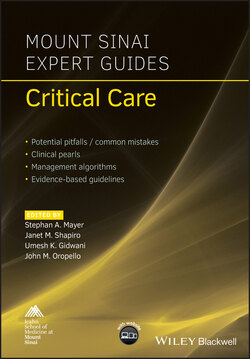Читать книгу Mount Sinai Expert Guides - Группа авторов - Страница 177
Renal complications
ОглавлениеHyponatremia remains one of the most common electrolyte disorders in the critically ill due to both excess fluid administration as well as impaired renal handling of fluids. Hyponatremia is a predictor of increased mortality in congestive heart failure and a marker of severity of illness in the general patient population. Daily monitoring of intravenous fluids and avoiding hypotonic solutions are key in preventing this electrolyte abnormality.
Central pontine myelinolysis (CPM) is an osmolar disruption in the brain that results in non‐inflammatory demyelination especially in the pons. CPM is a life‐threatening complication of rapid correction of hyponatremia. A conservative approach should be taken to correct hyponatremia by no more than 8 mEq/L over the first 24 hours, and no more than 15–20 mEq/L over 48 hours. Monitoring serum sodium frequently is crucial to the prevention of unrecognized rapid correction; when 3% saline is used, sodium should be monitored every 4 hours.
Hyperkalemia can result from renal insufficiency, rhabdomyolysis, burns, and/or trauma. It is also associated with commonly used medications such as digoxin, angiotensin converting enzyme inhibitors, angiotensin receptor blockers, heparin, NSAIDs, and succinylcholine. Treatment of hyperkalemia includes insulin plus dextrose, inhaled high dose beta‐agonist; calcium is administered in the setting of electrocardiography changes such as peaked T waves. Sodium polystyrene sulfate is another agent often used for treatment of hyperkalemia, however it should be noted that it has a very slow onset of action and has been linked to a complication of bowel necrosis.
Contrast‐induced nephropathy (CIN) is a common cause of hospital‐acquired acute kidney injury in the ICU. It leads to prolonged hospital stay, adverse clinical outcomes, and a 5.5% increased overall mortality. Critically ill patients are at a higher risk of developing CIN due to their greater severity of illness and comorbid conditions such as sepsis, hypotension, hypovolemia, and concomitant use of nephrotoxic agents. The mainstays for CIN prevention are hydration (pre‐ and post‐contrast) and the use of low osmolality contrast agents.N‐acetylcysteine (NAC) has been theorized as a potential agent in preventing CIN. Recent trials have looked at the efficacy of NAC in preventing CIN in the ICU by comparing the incidence of acute renal impairment after administration of iodinated contrast with or without NAC treatment. The results suggest that NAC impedes the rise of serum creatinine but does not improve overall renal function. Additionally, NAC carries a risk of adverse side effects such as anaphylactoid reactions when administered intravenously. Its utility remains questionable and is therefore not recommended for the prevention of CIN.
